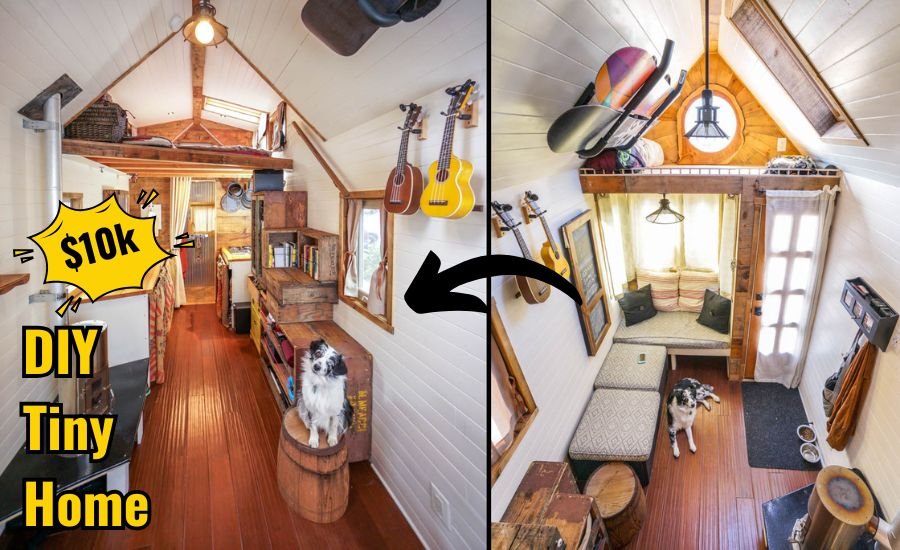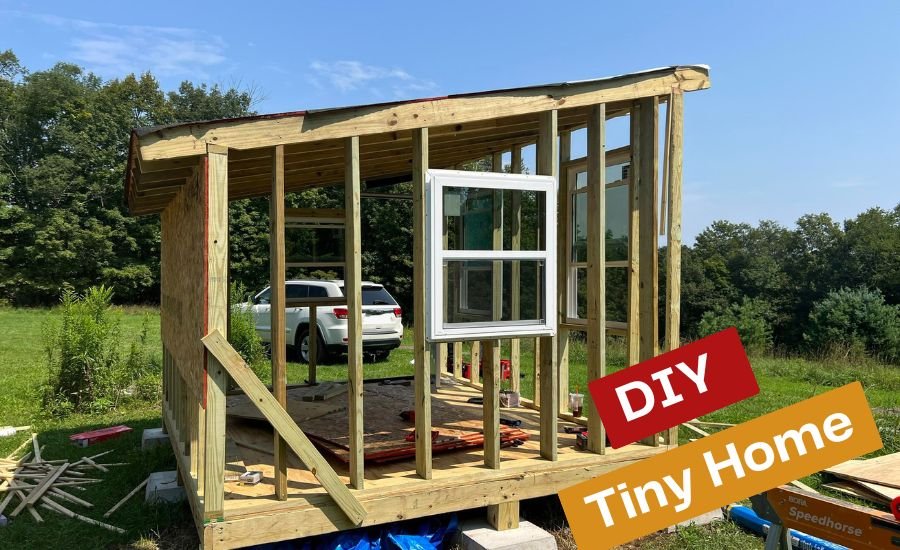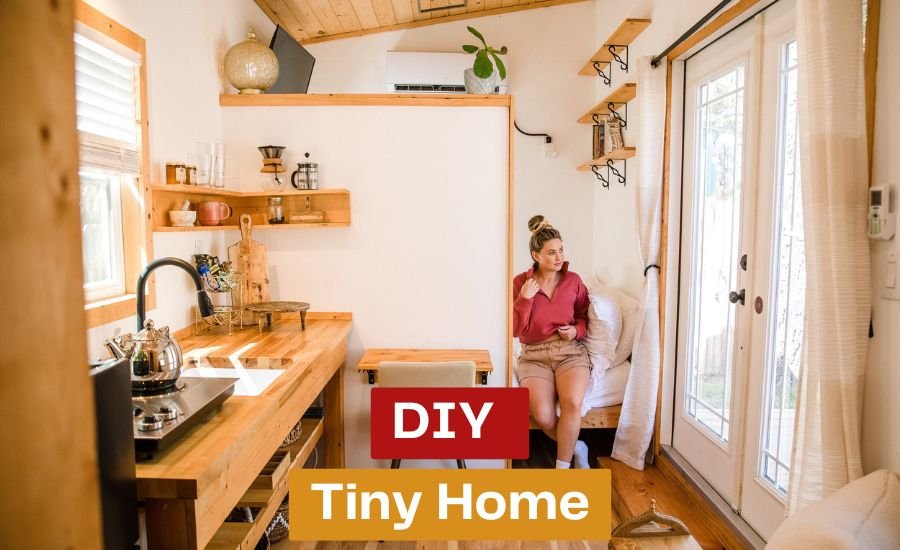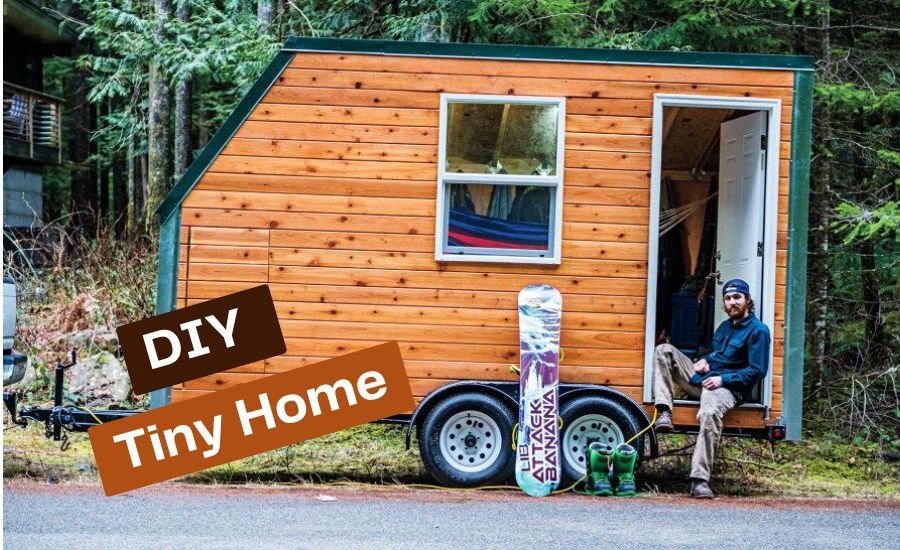The idea of building a DIY tiny home has seen huge popularity over the last few times. The people are searching for low-cost eco-friendly, minimalist, and sustainable ways to live. It doesn’t matter if you’re looking for a short holiday retreat, a long-term home, or an off grid getaway, building your own DIY tiny house could be an ideal solution. You can design the space to suit what you like, lessen the environmental footprint as well as save you money over the long term. In this article, we walk you through the fundamental steps, benefits as well as the challenges to making your own DIY home.
Planning Your DIY Tiny Home
When you begin building an actual home, it is essential to plan your project properly. It is the first step to determine what you want to accomplish with your small house. Is it a permanent dwelling, a home for vacations or rental property? Then, think about the place. You should check the local building codes for conformance. In addition, you must decide on the layout and size.
The majority of DIY tiny home built by DIY range between 100 to 400 square feet. Consider your needs for living such as storage space as well as sleeping spaces and other utilities. Drawing a plan or using design software will assist you in imagining the space more clearly. Planning properly can prevent costly blunders and will ensure an efficient construction process.
Budgeting for Your DIY Tiny Home

The process of budgeting is among the main aspects involved in making a small DIY tiny home. Start by determining how much you’re willing to invest. A small-scale home built from scratch will cost you anywhere from $10,000 to $50,000, based on your materials, the labor involved as well as other features.
If you want to save money, try recycling materials, performing all your work by yourself, or buying second-hand equipment. Divide the cost into different categories like equipment, materials and permits, as well as furnishings. A budget-friendly approach will allow you to complete your small home with no financial burden.
Choosing the Right Materials
The materials you pick can affect the longevity as well as the energy efficiency and design of your home. Most common materials that are suitable for DIY tiny home include wood, steel, as well as SIP (structural panel that is insulated). Wood is cheap and straightforward to use, while steel is strong and durable.
You can carry on with SIPs for remarkable insulation which leads to deductions in energy costs. Also consider some of the environmentally friendly materials for your home; for example, recycled bamboo, wood, and reclaimed steel. Selecting high-end, sustainable products guarantees that your DIY tiny home will last for a long time to the future.
Essential Tools and Equipment
Making your own DIY tiny home is a matter of having the appropriate tools. Important tools include:
Circular saw: Used to cut timber and other material with ease.
Power drill: Suitable to make holes, and also for driving screws.
Measurement tapes: Provides precise measurements that allow for accurate construction.
Hammer: Essential for nail driving and general assembly.
Level: Aids in maintaining smooth and straight surfaces.
Welding machines: Must be used to build metalwork when advanced technology is required.
Framing Nailer: Speeds up the process of fixing frames components.
Table saws: are ideal to cut precise lines in huge wood pieces.
By renting tools instead of purchasing them, renting can save money while equipping yourself with safety glasses, gloves and dust masks will make construction much faster and simpler. Having all necessary equipment will speed up construction projects!
Building the Foundation

The foundation is at the heart of your tiny, DIY tiny home and is a crucial factor in its strength. There are a variety of foundation choices you can choose from, such as the concrete slab foundation, trailer-based and pier-and beam. The trailer-based foundation is the best choice for those who want to build a mobile home.
A concrete slab provides an extremely solid and durable base as a pier and beam foundation offers greater flexibility and insulation. Be aware of the soil, climate conditions and mobility requirements in deciding on the best foundation for your home’s tiny footprint.
Framing and Insulation
The framing system is the foundation of the tiny house you can build yourself. The majority of tiny houses use wooden or steel framing. Wood is a lot easier to work with while steel is stronger and has better the ability to resist fire. When the framing process is completed then insulation will be the next thing to do.
Proper insulation will keep indoor temperatures at an even temperature, increasing energy efficiency while creating a cozy living environment and decreasing cooling and heating costs. Popular choices of insulation are fiberglass, spray foam and rigid foam board insulation options. By investing in quality insulation installation your house will remain cozy while energy costs decrease significantly.
Plumbing and Electrical Systems
Installation of electrical and plumbing systems within a DIY tiny home is a meticulous process. When it comes to plumbing, think about whether you would prefer a conventional installation or a non-grid option including a composting toilet, or rainwater collection. Utilize PEX pipes for its flexibility and ease of installing.
If you want electricity, decide the best way to be connected to the grid or install solar panels. Solar power systems can transform your home into an energy-dependent one. Hiring a qualified professional to inspect all plumbing and electrical work in order to guarantee both security and compliance is an invaluable way to protect both yourself and others from liability issues.
Must Read: DIY Single Wide Mobile Home Porch Ideas
Interior Design and Space Optimization

Planning the interior of your own tiny home is a thrilling process. Because space is scarce, make the most of your space by utilizing versatile furniture as well as creative storage options. Use lofted beds; install foldable tables and built-in shelving to maximize every bit of sunlight.
Adichholot only allows clever use of mirrors in light colors, big windows with full natural light, to give physical illusion to space; said cheat farther. They can help give any interior design scheme an air of ease and expansiveness that could only come from such design decisions.
Heating, Cooling, and Ventilation
Keeping suitable temperatures in winter in small spaces is most crucial. Heating options, like wood stoves or propane heaters or mini-split units may prove effective; ceiling fans or portable air conditioners could offer cooling relief; dehumidifiers, vents and operable windows will aid with airflow; energy-efficient HVAC and cooling systems can increase comfort while decreasing expenses related to energy.
Sustainable and Eco-Friendly Features
One of the greatest advantages of DIY tiny home is sustainability. You can even introduce eco-friendliness with solar panels and rainwater harvesting systems, recycling materials wherever possible; buying local whenever possible and using energy-efficient appliances and LED lighting, which saves on utility costs while minimizing carbon footprints and increasing independence/self-sufficiency.
Common Challenges and How to Overcome Them

Building your own DIY tiny home has its share of challenges-from legal requirements and space constraints to construction issues. Make sure to research local laws prior to starting on this endeavor so as to avoid legal problems; intelligent storage options or multifunctional furniture might help provide more space.
For assistance during construction issues seek assistance through internet-based resources like DIY communities, forums or expert consultation. Being prepared for obstacles that could arise can help you build your DIY tiny home dimensions efficiently.
Conclusion
DIY tiny home building can be an incredible path towards financial independence as well as sustainable living and minimal lifestyle choices. Through careful planning, budgeting, and imagination you are able to craft a livable living space tailored specifically for the needs of you and your family – be it an off-grid retreat or all-year home, creating your own tiny house will prove rewarding and life changing! Get started today and begin the journey toward your ideal tiny house!
Stay Connected with Better Home Crafts!
FAQs
Q: How much cost? And does it cost to produce an inexpensive DIY tiny home?
A: Costs lie somewhere in between 10 thousand and 50 thousand dollars, depending on labor, materials, and design and style choices.
Q: Can I place my small home that I built anywhere?
A: No, but you must check your local laws and regulations regarding zoning for compliance prior to deciding on the location.
Q: What’s the most suitable base for a tiny house?
A: It’s all about the needs of your family. Trailers work great to move around, whereas concrete slabs as well as pier-and beams offer strength.
Q: Do I require approval to construct an DIY small house?
A: Most locations require permits for construction as well as utilities. So, make sure you are sure to check the local regulations prior to building.
